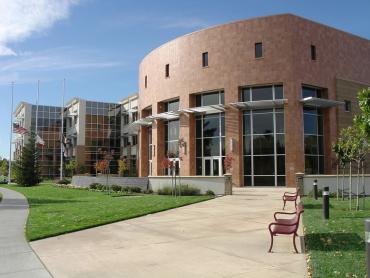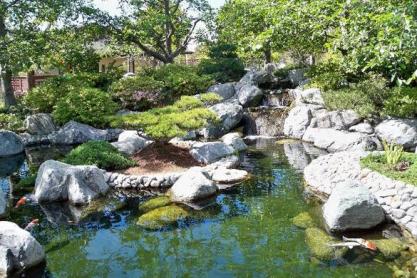
There's no reason for artificial grass to be banned in this day and age. It's practically indistinguishable from real grass, and it saves water, which is recognized as a precious resource. Cities and HOAs will soon have to lift any bans they have on artificial grass. Some cities who have bans on artificial grass aren't even enforcing their prohibition anymore. Sacramento for instance created a no-artificial-grass-in-front-yards law in the 80s. But city officials say that they aren't enforcing it anymore and even plan to have it legalized officially on the books.
"Currently artificial turf is prohibited by ordinance, however, given the current drought situation, it's not being actively enforced," Sacramento District 4 Director Consuelo Hernandez said. "Residents are not required to have live turf in their front yard under city code, but if they want to deviate they can put in half concrete or rock or paver-type materials and half live vegetation such as shrubs, plants, trees. Again, if they install artificial turf in the front yard, which at this point there have only been a few homes doing this the last couple years, code is not being enforced."
And Sacramento city council member says, "Absolutely and I plan to (change the law). And when the drought issue comes back, I plan to raise it again, I've raised it several times at council before and I think it's a great issue to keep agitating around."
San Diegans: Artificial Grass Forerunners

San Diegans are the forerunners of the artificial grass movement. San Diegans who installed artificial grass recently helped the city achieve one of its lowest water usage records ever for the month of February. And more homeowners will install artificial grass. This month it will become incentivized. Starting Wednesday, the incentive program which rewards homeowners who replace their natural grass with drought tolerant alternatives like artificial grass will be revived. The program will give $1.5 per square foot replaced, and then residents can combine this amount with a state program of $2 per square foot replaced for a total of $3.5 per square foot reimbursed for San Diego residents.
Indeed, artificial grass will slowly become the standard surface material for residential areas.
The director of the city's Public Utilities Department says the city will also start to enforce the regulations they created in November. Right now they have about 200 violations that will be punished with fines ranging from $100 to $500. The fines will be issued starting now.
Be a responsible San Diegan and install artificial grass today. A great company is Global Syn-Turf. They can be reached at their San Diego warehouse in Poway.
California Turns to Artificial Grass
Governor Jerry Brown announced last week the state of California's first-ever mandated water reduction measures. The state is enjoined to reduce their water consumption by 25%. The mandate is directed at homeowners who overwater their lawns. Jerry Brown even went so far as to say that the days of the nice green lawn getting watered every day is a thing of the past. With these stringent new regulations being put into effect, artificial grass is looking more and more attractive and less and less like a secondary choice.
One resident in Orange County says that she and her mother live in a house with a natural grass yard. The natural grass has been there for sixty years. However, she says that if the drought worsens, she and her mother will consider installing artificial grass. They won't however install xeriscaping because having lawn that is suitable for sportive activities is important to her family and her children.
Her mother even went so far as to call artificial grass the wave of the future. Indeed, artificial grass will soon displace natural grass as the standard surface material for residential yards.
The California Water Resources Board will announce how it will achieve statewide cuts in two weeks.
Artificial Grass Saves Water Amid California Drought
Artificial grass is not just a passing fad but seems to be becoming a norm in the landscaping world. Artificial grass wasn't truly tested until the past decade when the technologies had advanced to the point that a sufficient amount of homeowners were convinced to install it in their homes, and now, after a few years, the artificial grass in the yards of the homeowners who first decided to install it have proven artificial grass and tried and true groundcover for the long-term. The main benefit for Californians being that it saves water.
California has just added to their list of water restrictions.
1. Homeowners are no longer to wash their cars without a hose with a shut-off nozzle
2. Homeowners can no longer spray off their sidewalk and driveway
3. Homeowners no longer may let irrigation run off of their backyards
4. Restaurants may no longer serve water unsolicitedly.
5. Hotels must give their guests the option of not washing their linens
6. Homeowners may no longer water their lawns during storms or for 2 days after storms.
These restrictions will continue to become more stringent even if the drought abates, in preparation for similar droughts to come. Artificial grass will displace natural grass as the norm.
The Politics of Synthetic Turf Crumb Rubber Infill
Whenever any idea takes root, is sure to come underscrutiny. The latest phenomenon to take root and come under scrutiny is synthetic turf. But not synthetic turf as such, but the crumb rubber pellets that are frequently used to infill the synthetic turf fields. More people are starting
In fact, one department in Kentrucky stopped granting money to communities to build synthetic turf playgrounds and fields infilled with crumb rubber in response to the public decry of such materials, even though no conclusive research has been done to conclude that the limited exposure children have to crumb rubber while playing on these surfaces have harmful effects.
IN fact one toxicologist says that the exposure to the crumb rubber is so irregular and infrequent that it probably isn't enough to be harmful to children, even if the crumb rubber is toxic.
On the other hand, one field in New jersey which was tested was found to have unsafe levels of lead in the synthetic turf field. And another district spent several hundred thousand dollars to replace all of the synthetic turf fields in the district after just two were found to be above regular levels.
The debate will continue until conclusive research has been done.
The Greatest Environmental Problem in California
Smog is not the top environmental problem among Californians anymore, in
accordance with a public-policy Institute of California study. It's water.
Since sixty percent of a regular household's water usage is for outdoors and
bulk of outdoor water goes to lawns, synthetic grass is becoming an excellent
alternative for real lawn during the drought in the 90s in California, now the
desire for it is greater than actually. As a way to fight the drought
effectively, more than 60% of a regular residential home's water use goes to
yards, changing real yards to additional low water or artificial lawn needing
planting becomes nearly imminent. Gleneagles is a challenging greens in San
Francisco, California that's been experiencing care. This unique greens has
survived several economical problems, yet the course owner has been caused by
the latest increase in water rates to contemplate shutting the class. Using
synthetic lawn in golf links can be an excellent idea. Although the first price
may not be low, but when individuals carefully compute nowadays's water cost
together with maintenance cost on lawn that is real offered considerations of
that artificial turf can withstand use than turf that is normal, it may
possibly just worth it!
Ca isn't the only condition with famine
problems. In TX, corporations that fabricate or install artificial lawns are
having a boom in business, due to the famine-like conditions and watering
limitations in many North Texas cities. Right as there are famine restrictions,
sprinkling constraints, or an ordinance such as the City of Texas two-times a
week restriction, it actually only makes the artificial grass industry burst.